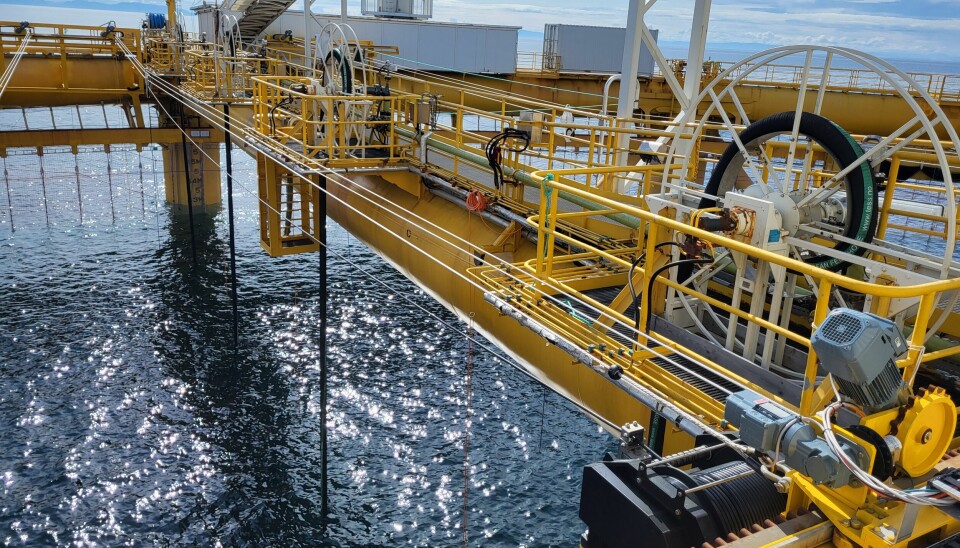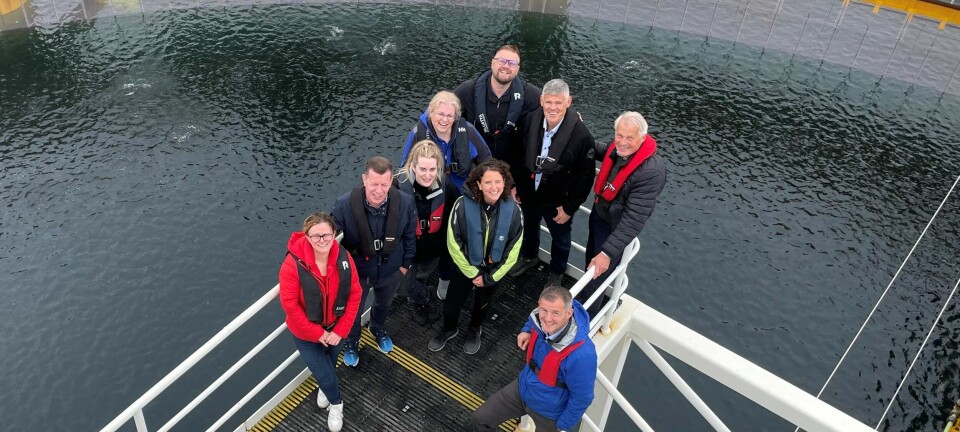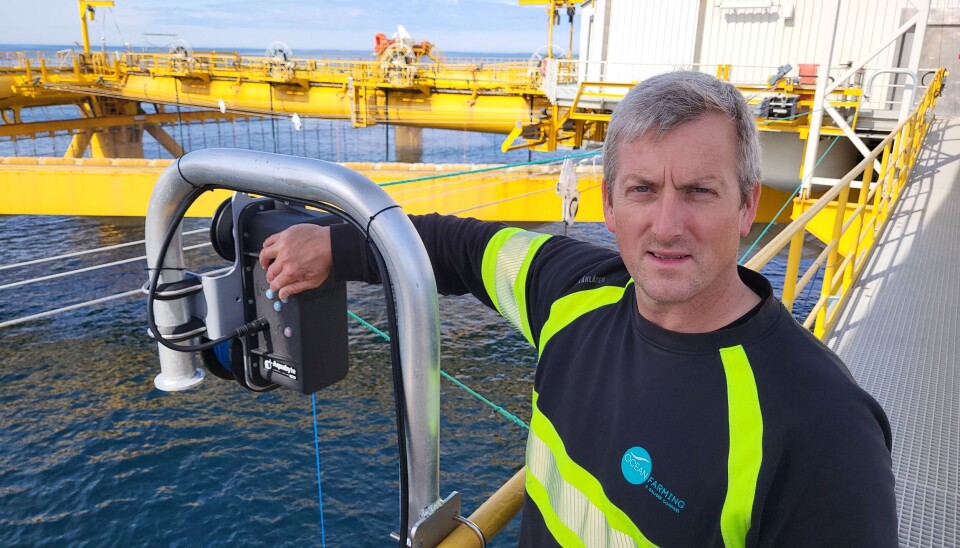
Come aboard SalMar's ocean cage
Scotland's aquaculture minister Mairi Gougeon last week toured the upgraded Ocean Farm 1, a technology that can be used to take the industry further offshore in Norway, and possibly Scotland. Here you can take a peek at what the minister saw.
The company Salmar Aker Ocean AS aims to produce 150,000 tonnes of salmon annually, and to be one of the world's largest producers.
The company’s pioneering Ocean Farm 1 (OF1) was built in 2018 in China and is located at the far end of the archipelago outside Frøya in Trøndelag, central Norway.
It looks like some kind of oil rig but is a cage of a whopping 110 metres in diameter, rising 64 metres above the surface and extending 43 metres below it. It takes time to digest the sizes when you get closer, and on board.
A few months ago, OF1 was back at Frohavet after a planned stay at Aker Solutions' shipyard in Verdal. There it was upgraded and improved.
Fish Farming Expert’s Norwegian sister site, Kyst.no, has taken a trip to see the upgrades.
The new gangway on OF1 is the first example of improvements one encounters when the boat arrives.
“The landing is a good health and safety measure. Before, we climbed on board via a ladder. Not all days out here are as calm as now,” says Rune Sandvik, platform manager on the shift.
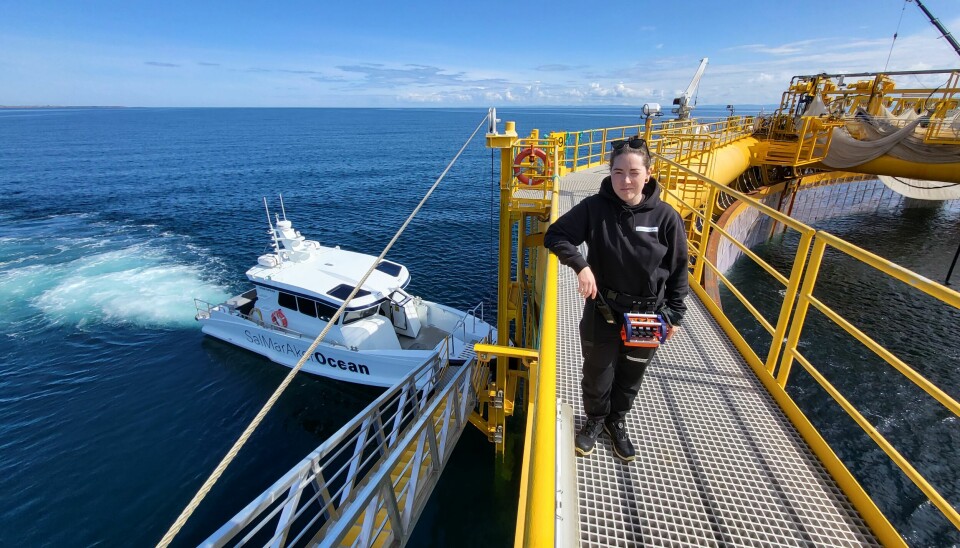
The gangway can be effectively raised up and down depending on how high the sea cage is in the water. The movable gangway is also better in waves when people have to transfer between boat and cage.
“We have quite a few visitors who are not used to being here. The new gangway is much better for them too,” says Sandvik.
Elisabeth Moe is new to OF1 and runs the entire gangway with experience when we come on board.
“I have worked with farming on land and am looking forward to a lot of new things to learn here,” she says.
Comprehensive process
The world's first cage at sea houses an enormous process. The salmon stocked here are 500 grams.
“When the cage is fully utilised, OF1 can produce salmon that provide approximately 30 million meals annually,” says Sandvik.
Automated cleaners (robots) brush the net on the cage. They stand on trolleys that move automatically, Sandvik says enthusiastically.
“The robots are raised and lowered and have flaps that press the brushes against the net. They rotate when the device is pulled up or lowered,” he says.
“A camera registers if something is wrong with the net. We are testing this now. The camera constantly and automatically moves around. This solution is in addition to regular inspections. The camera monitors that all the parts of the cage’s main net have the right shape and weight load,” explains Sandvik.
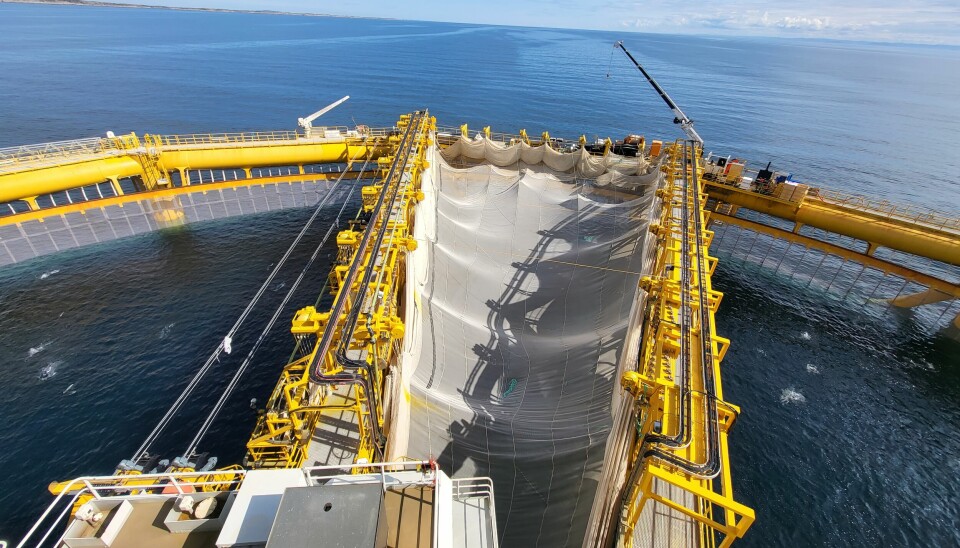
Fewer lice
Lighting and feeding are used to keep the salmon so deep that the problem with sea lice is reduced.
OF1 has also been fitted with a camera system so it is possible to monitor the welfare of the fish. The technology constitutes a major improvement that gives a very good overview of production, explains Sandvik.
“We have installed two cameras from Aquabyte. We started testing with these on the previous farming cycle and have received the second camera for the stock (OF1’s third cycle) which is in the cage now,” he says.
“This technology means that the cameras count lice and detects what stages of lice there are. At the same time, the weight of the salmon is recorded, and any damage or blemishes the fish may have had are detected automatically,” he says.
Reporting of lice numbers takes place via an online system, Altinn.
“This way of handling the fish is approved by the Norwegian Food Safety Authority and provides major operational advantages. Previously, we counted lice manually weekly, where the requirement is that 20 fish be checked. The camera system, on the other hand, gives lice figures for 600-700 fish weekly,” explains Sandvik.
Feed
A separate camera system is used for feeding.
“The cameras are run according to how the feeding is going, and the result is an even better overview of the entire production compared to before this camera system was put into use,” he says.
The fish feed is usually delivered with the vessel Eidsvaag Pioneer, which has also been used in another project to test autonomous deliveries.
“We get supplies on board such as water and diesel for the generator, as well as the feed, which is stored in 16 silos,” he says.
Collection of dead fish is done with a remotely operated vehicle (ROV) which also enables the operators to keep an eye on what else is happening below the surface.
“We run it daily for inspection, and collect dead fish.”
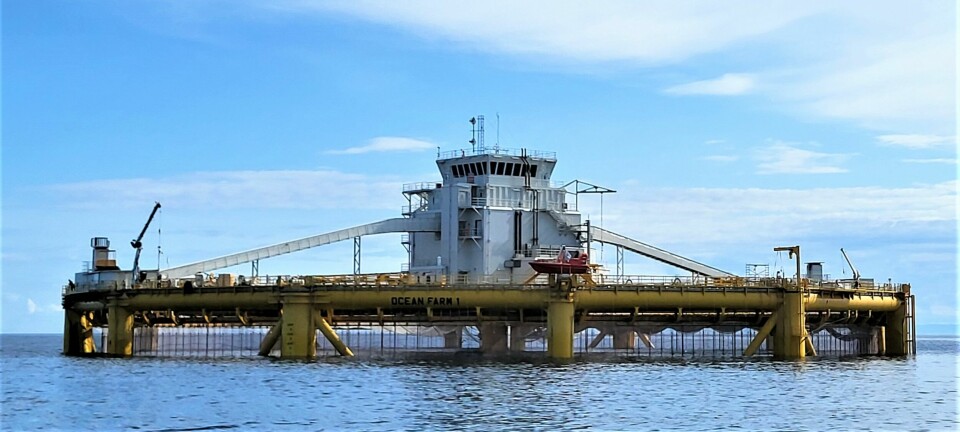
How harvesting works
A large boom runs between the centre and the edge of the cage. On it hangs a net which is dropped all the way down to the bottom of the main net. The boom is then slowly moved around from one side of the circular cage, until the salmon are crowded. They are then pumped on board wellboats that transport the fish to a harvest facility.
OF1 has a crew of four. They work 12-hour days for two weeks and have four weeks off before the next muster.
The cage is built with technical knowledge Norway has acquired offshore in oil and gas. The cage weighs 7,000 tonnes.
